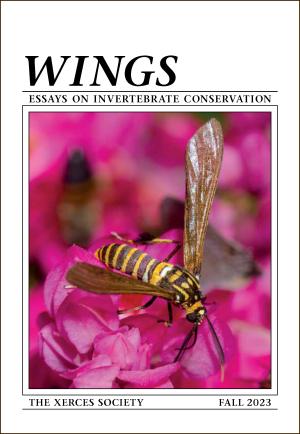
Moths are all around us. They share our natural areas and gardens, and sometimes they share our food crops, and even our clothes. Love them or despise them, moths play profoundly important roles in our environment—as pollinators; as food for songbirds, bats, and other wildlife; as part of the clean-up crew that recycles organic waste; and more—and they deserve our conservation attention.
Gardening for Good, by Scott Black. Page 3.
The Glorious Diversity of Moths, by Eric Lee-Mäder. From species larger than your hand to those smaller than your pinkie fingernail, moths are a remarkably varied and often quite beautiful group of insects. Page 5.
The Bogong Moth, An Icon Driving Insect Conservation in Australia, by Kate Umbers. The bogong moth has enormous cultural, ecological, and economic significance for Australians. A new initiative aims to protect this important species. Page 12.
Enjoying Moths in Your Garden, by Eric Lee-Mäder. With a little care, you can create a garden that will support an abundance of moths —and you can get a glimpse at lovely creatures that are normally hidden. Page 17.
Staff Profile. Eric Lee-Mäder, pollinator and agricultural biodiversity co-director. Page 24.
Partner Spotlight. Invertebrates Australia, a new nonprofit organization, works to provide an integrated scientific approach to the conservation of Australian invertebrates. Page 25.
Xerces News. Updates on Xerces Society projects and successes. Page 26.
